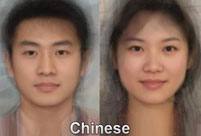 Top 100 beauties in the world!
Top 100 beauties in the world!
 Gallery: Who is the most beautiful one?
Gallery: Who is the most beautiful one?
 If you like autumn, put your hands in the air!
If you like autumn, put your hands in the air!
 Fan Bingbing's "Queen style" in new play
Fan Bingbing's "Queen style" in new play
 Lingerie show at 2014 Miss China
Lingerie show at 2014 Miss China
 J-10 fighters show aerobatic stunts in smog-free sky
J-10 fighters show aerobatic stunts in smog-free sky
 Charming contestants of Shanghai Int’l Model Contest
Charming contestants of Shanghai Int’l Model Contest
 Most amazing chi-pao beauties
Most amazing chi-pao beauties
 7 deadly animal attacks
Russia to launch 70 Proton rockets by 2020: official
7 deadly animal attacks
Russia to launch 70 Proton rockets by 2020: officialATHENS, Nov. 15 -- After the discovery of a human skeleton at the Amphipolis burial complex in northern Greece this week and the end of this phase of excavations at the archaeological site of the ancient city, the focus of experts has turned to the DNA testing which could help reveal the identity of the "owner" of the magnificent massive tomb.
The list of the candidate occupants of the tomb is still extensive. It includes several family members and close aides of Alexander the Great, according to archaeologists.
However, lab measurements which could give answers to the riddle, will take up to six months, or even a year, otherwise they may lead to false conclusions, Greek specialists warned, speaking to local media.
The skeleton can shed light to the mystery of who was buried in the tomb in the 4th century BC more than the sculptures, the mosaic and any other finding which has been unearthed during the dig since August, they stressed.
Therefore the next step for experts includes bone analysis and DNA testing of the remains found.
The DNA material will be sent to the Institute for Bimolecular Studies in Manchester University, which is in close cooperation with the Greek lab responsible for the antiquity measurements, "Demokritos."
According to the Director of "Demokritos" lab Yannis Maniatis, the procedures of the DNA testing take time.
The most immediate answers that can be given from the DNA analysis can reveal the buried person's height, sex and age.
In addition, the DNA material of the Amphipolis skeleton will be compared with the DNA profile of those buried in the Royal Vergina tomb, to determine whether the person buried in Amphipolis is of royal descent related to the royal family of Vergina.
Alexander the Great's father was among the occupants of the Vergina tombs discovered also in northern Greece four decades ago.
In a second phase scientists believe that with the Amphipolis skeleton skull in their hands they could also reconstruct the head of the Amphipolis occupant.
It will not be the first attempt to reconstruct an ancient Greek face based on the human remains found in a tomb.
In 2010 Orthodontics Professor at the University of Athens Manolis Papagrigorakis, who specializes on archaeological skulls, presented the head of Myrtis, an 11-year-old girl from ancient Athens, whose skull was unearthed in excellent condition from a mass grave and was recreated.
The original skull was replicated via three-dimensional modeling and rapid prototyping techniques, giving the opportunity to admire for the first time in the world an ordinary ancient Greek girl.
 Standard faces for each countries
Standard faces for each countries Photos: Xi Jinping in Fujian
Photos: Xi Jinping in Fujian China-made military transport aircraft gets ready
China-made military transport aircraft gets ready World Pole Dance Championship in China
World Pole Dance Championship in China Shocking! Photos of Chinese fighters revealed
Shocking! Photos of Chinese fighters revealed 59-year-old Liu Xiaoqing still looks stunning
59-year-old Liu Xiaoqing still looks stunning  In pics: PLA stages live-fire drill in NE China
In pics: PLA stages live-fire drill in NE China  Post-85s female pilots and their mission
Post-85s female pilots and their mission Netizens fall in love with champion swimmer Ning Zetao
Netizens fall in love with champion swimmer Ning Zetao Top 10 most dangerous jobs in the world
Top 10 most dangerous jobs in the world  Top 10 fifth generation jet fighters in the world
Top 10 fifth generation jet fighters in the world Top 10 Chinese goddesses
Top 10 Chinese goddesses  Top 20 hottest women in the world in 2014
Top 20 hottest women in the world in 2014 Top 10 pure beauties in showbiz
Top 10 pure beauties in showbiz  Top 10 world's highest-paid models 2014
Top 10 world's highest-paid models 2014 The most gorgeous Chinese women
The most gorgeous Chinese women Top 10 most handsome faces in Asia
Top 10 most handsome faces in AsiaDay|Week|Month